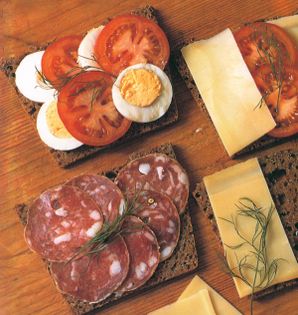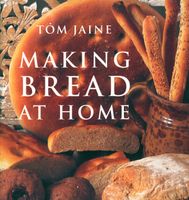Advertisement

Preparation info
- Makes
2
loaves - Difficulty
Medium
Appears in
By Tom Jaine
Published 2005
Pumpernickel (the Devil’s wind, a reference to its causing flatulence) originated in Westphalia on the banks of the Rhine. It is a dark and dense rye bread, cooked extremely slowly, which has no obvious leavening, though it does ferment spontaneously during a long rest in the tin before baking. It is steamed rather than baked, and the slow cooking ensures that it keeps very well. A fact of life is that breads that cook fast are never long keepers, and the giant loaves that once were baked o


